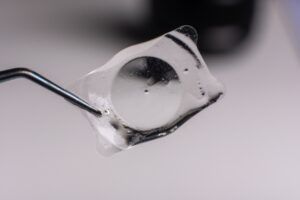As we age, our vision changes, and many individuals over 40 begin to experience a decline in their ability to see clearly, especially up close. This is often the onset of presbyopia, a natural condition affecting nearly everyone as they age. Fortunately, various effective vision correction procedures are available to help people over 40 improve their vision and lead a more active, independent lifestyle. At Alvarado Eye Associates in San Diego, Dr. Lee Katzman and his expert team are dedicated to providing advanced treatments that restore clear vision without needing glasses or contact lenses. If you’re over 40 and wondering which vision correction option is right, here’s everything you need to know.
Understanding Vision Changes After 40
Many people experience difficulty reading small print or seeing objects up close around age 40. This is due to the gradual loss of flexibility in the eye’s natural lens, known as presbyopia. Presbyopia occurs as the eye’s lens becomes less flexible, making it harder to focus on near objects. While presbyopia is a natural part of aging, it can be frustrating and affect daily life.
In addition to presbyopia, individuals over 40 may experience other common vision problems, such as nearsightedness (myopia), farsightedness (hyperopia), or astigmatism. These conditions can further complicate vision correction, making it more important than ever to consider the best available treatment options.
Why Vision Correction Procedures Are Needed After 40
For people over 40, the need for vision correction becomes more urgent as presbyopia and other age-related vision issues begin to impact daily activities such as reading, driving, and using a smartphone or computer. Many individuals in their 40s and 50s may find themselves reaching for reading glasses or struggling with blurry vision, affecting their work, hobbies, and overall quality of life.
In addition to presbyopia, age-related conditions such as cataracts may begin to develop around the age of 50 or later. Cataracts are not just the loss in flexibility of the natural lens, but a clouding of the lens, which leads to decreased visual clarity and difficulty seeing at night. Left untreated, cataracts lead to blindness; In fact, it’s the number one cause of reversible blindness around the world. Cataract surgery is an extremely effective treatment for restoring vision, which is why it’s one of the most common surgeries performed in the United States every year. And it may be performed earlier in life even before cataracts form, in a procedure known as Clear Lens Exchange (CLE). Once performed, a patient will no longer need to get cataract surgery when they get older, while getting immediate benefits in terms of vision clarity and quality of life.
The Best Vision Correction Options for People Over 40
Several vision correction procedures are available for individuals over 40, each designed to address specific needs and offer lasting improvements. Below are the most popular and effective options:
LASIK Eye Surgery
LASIK (Laser-Assisted in Situ Keratomileusis) is one of the most well-known vision correction procedures available. LASIK can treat nearsightedness, farsightedness, and astigmatism by reshaping the cornea to allow light to focus correctly on the retina. LASIK can significantly improve vision for people over 40 who experience these common refractive errors, reducing or eliminating the need for glasses or contacts.
However, LASIK may not be the best option for those with presbyopia, as the procedure does not address the loss of near vision caused by age-related changes to the lens. People over 40 may require an adjustment to the typical LASIK treatment, called monovision LASIK, which can correct one eye for distance vision and the other for near vision. Many people tolerate this well, but around 1 in 4 people do not. A monovision trial in contact lenses is typically required to be sure you are a good candidate for this procedure. Finally, age is definitely a factor in determining candidacy with monovision LASIK, as it may be a great option if you are 40, but much less-so if you are 50 and over.
It’s important to discuss with Dr. Katzman whether monovision LASIK is a good fit for your lifestyle and vision needs.

EVO ICL (Implantable Collamer Lens)
EVO Implantable Collamer Lenses (ICL) offer several benefits for patients over 40 seeking vision correction but also come with some drawbacks. One major advantage is that EVO ICLs provide high-definition vision with a broader range of correction for nearsightedness and astigmatism than LASIK, making them a viable option for individuals with thin corneas or dry eye issues. They are also reversible, allowing for future adjustments as vision changes with age. Additionally, they offer UV protection and do not carry the risk of inducing corneal flap complications that come with LASIK surgery.
However, for patients over 40, presbyopia remains a concern, as ICLs do not directly address this issue. Some patients may still require reading glasses unless combined with monovision correction. Monovision EVO ICL is the same as monovision LASIK, where one eye is targeted for distance while the other eye is set for a more near target. Again, this may not be tolerated by all patients and requires a contact lens trial prior to undergoing the procedure. There is also a small risk of cataract formation, glaucoma, or increased intraocular pressure, necessitating long-term monitoring. Furthermore, the procedure is more invasive than LASIK, involving intraocular implantation, which carries a slight risk of infection or complications. Despite these considerations, EVO ICLs remain an attractive option for those seeking clear, sharp vision while preserving corneal integrity, in particular for patients that are not candidates for LASIK and are in their early 40s.

Clear Lens Exchange (Refractive Lens Exchange)
Clear Lens Exchange (CLE), also known as Refractive Lens Exchange (RLE), is an advanced surgical procedure ideal for individuals over 40 experiencing presbyopia, farsightedness, or the early signs of cataracts. This treatment is essentially the same as cataract surgery, but performed before a cataract has formed. During the procedure, which typically takes around 10 minutes per eye, the natural lens of the eye is removed and replaced with an artificial intraocular lens (IOL). This replacement lens can be customized to correct near, intermediate, and distance vision, making it a permanent solution to presbyopia and other age-related vision problems.
CLE/RLE is particularly beneficial for patients who are not ideal candidates for LASIK or other corneal procedures, as it addresses the root issue of aging vision by removing the deteriorating lens entirely. One of its major advantages is that patients will never need cataract surgery in the future, as the lens is already replaced. Additionally, premium IOLs—such as multifocal or toric lenses—can be selected to provide sharp vision across multiple distances, minimizing or eliminating the need for glasses. With a quick recovery time and long-term results, CLE/RLE offers one of the most comprehensive and effective solutions for restoring visual clarity in patients over 40.
Premium Lenses and Multifocal IOLs
For individuals undergoing Clear Lens Exchange or cataract surgery, premium lenses such as multifocal IOLs and Light Adjustable Lenses can provide clear vision at multiple distances, reducing the reliance on glasses or contacts. These lenses are particularly beneficial for people over 40 who have presbyopia, as they address both near and far vision issues that LASIK and EVO ICL cannot address in the same manner.
Cost and Benefits of Vision Correction Procedures
The cost of vision correction procedures for people over 40 can vary depending on the treatment chosen and the technologies involved. LASIK is typically more affordable than Clear Lens Exchange (CLE), especially if only basic IOLs are used in the CLE procedure. However, the benefits of CLE, such as preventing the future need for cataract surgery and never requiring prescription glasses again, may make it a more cost-effective option in the long run.
Premium lenses, such as multifocal IOLs, can increase the cost of CLE or cataract surgery. Still, they provide long-term benefits by improving vision at multiple distances and reducing dependence on glasses. Patients should discuss the costs of different options with Dr. Katzman to determine the most suitable treatment for their needs and budget. In general, in the San Diego market, Contoura LASIK may cost around $2300-$2600 per eye, EVO ICL $5500-$6500 per eye, and Clear Lens Exchange $6000-$7500 per eye.
Why Choose Alvarado Eye Associates in San Diego
At Alvarado Eye Associates in San Diego, Dr. Lee Katzman and his team offer personalized, comprehensive care for individuals over 40 looking to improve their vision. With various advanced vision correction options to offer, Dr. Katzman can help you choose the best procedure based on your vision needs and lifestyle. We feel it is vitally important to seek the opinion of a surgeon that performs ALL refractive surgical procedures in order to obtain a biased-free opinion about your eye care; Oftentimes LASIK-only eye centers recommend LASIK to all prospective patients without informing them of better options available elsewhere.
Whether you’re considering LASIK, Clear Lens Exchange, or EVO ICL, Dr. Katzman will evaluate your eyes and provide you with all the information you need to make an informed decision. Alvarado Eye Associates is dedicated to providing top-quality care and ensuring that each patient has the best possible experience and outcome from their procedure.
